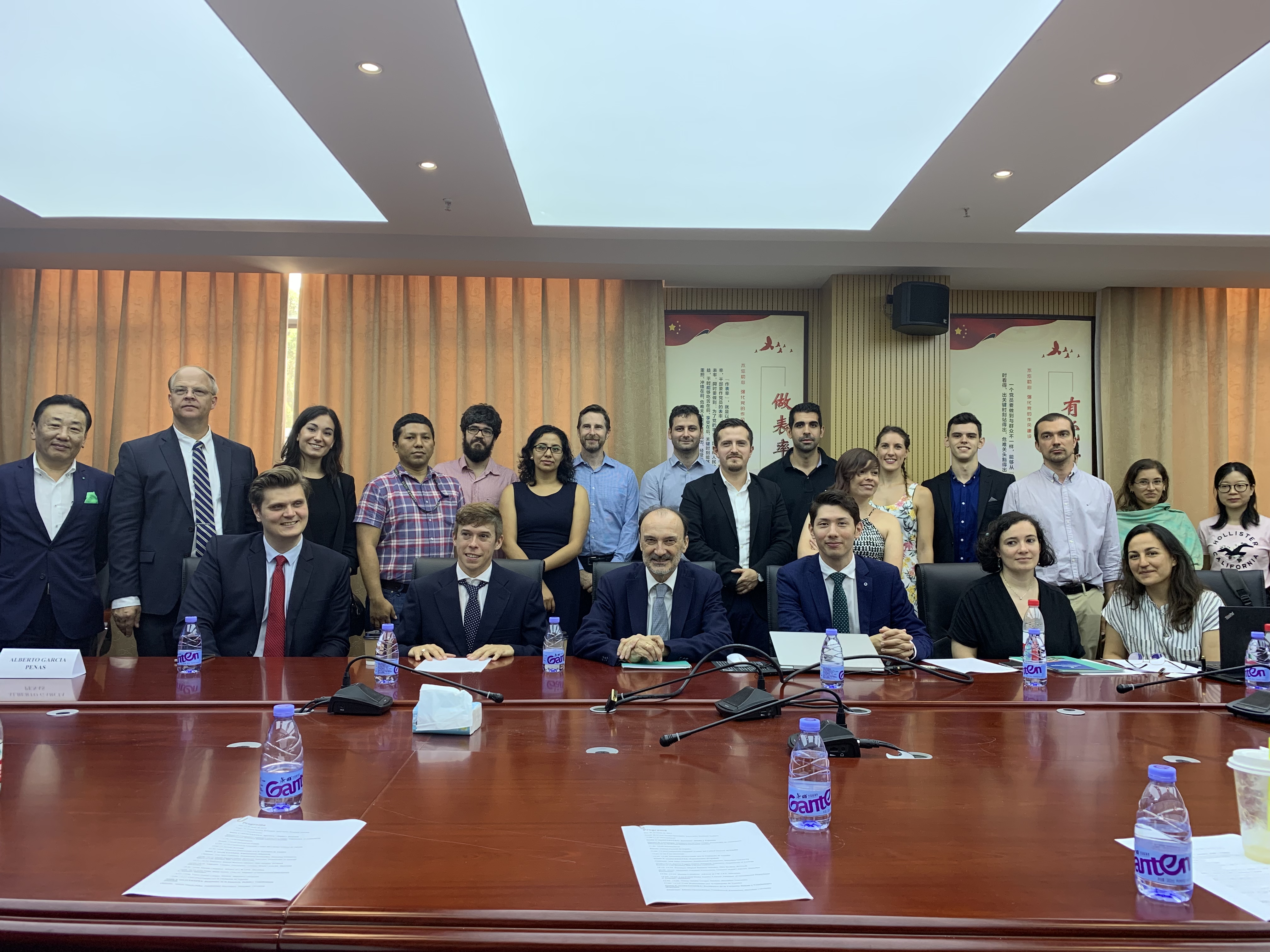Ibero-American researchers set up network
Writer: Chen Xiaochun | Editor: Holly Wang | From: | Updated: 2019-07-01

Ibero-American researchers and other representatives pose for a group photo at the first meeting of Ibero-American researchers in southern China at the Southern University of Science and Technology on Saturday. Chen Xiaochun
A group of researchers sharing the same native language, Spanish, gathered at the Southern University of Science and Technology (SUSTech) on Saturday to inaugurate the first meeting of Ibero-American researchers in southern China.
The event was organized by RICE, SUSTech Inceisa Synergetic Innovation Research Institute, the Embassy of Spain in China and EURAXESS. The Network of Researchers China-Spain, known as RICE for its acronym in Spanish, was created in February 2016 with the aim of bringing together Spanish researchers and scientists in China.
The Spanish-Speaking Researchers Shenzhen Liaison Office, a cooperation between RICE and SUSTech Inceisa Synergetic Innovation Research Institute, was inaugurated on the same day.
“We are brother nations that seek together to improve our countries through knowledge and scientific progress. We not only share the same language, but also have common dreams and wishes. We can enrich ourselves from one another. Through this network, we want to exchange information and cooperation to offer opportunities and enhance the efficiency of the Ibero-American scientific community in South China,” said Alberto Garcia-Penas from Spain, a postdoctoral researcher at Shenzhen University and representative of RICE Guangdong.
Jesus Gracia Aldaz, consul general of Spain in Guangzhou, who didn’t know much about Shenzhen before coming to China, gave high praise for the meeting of Spanish-speaking researchers held in the city.
“Only a friend of mine, the director general of Spanish telecom company Telefonica, told me ‘you have to go very often to Shenzhen because it’s the hotspot in southern China for research, communications, innovation and universities.’ We are fortunate to be here in Shenzhen today, which is the hotspot of the world for innovation that we can see every day, such as the next generation of 5G development,” said Gracia.
Gracia said that nowadays there is a special link between science and diplomacy. “We cannot think about science today without thinking of it at an international level and without cooperation. The era when a researcher of a certain department or laboratory working alone deep into the night and getting scientific results or innovation has already gone. Different groups of researchers have to work together with people from other disciplines and from other places of the world.”
“Science is more and more international and diplomacy has more and more scientific elements. Diplomacy can not only be an exchange of courtesies or a cocktail of social gatherings, but also has to work and seek solutions to global challenges,” said Gracia, adding that all countries, including Canada, the U.S., the U.K., China and Russia, have a system of science diplomacy to facilitate contacts and exchanges.
EURAXESS is a unique pan-European initiative delivering information and support services to professional researchers, said Halldor Berg, China representative of EURAXESS.
“When I came five years ago, it was really hard to find European researchers in China. They were scattered around, unorganized, everybody in their own corner. Nowadays it is changing,” said Berg. “The RICE Guangdong network is valuable for all of us. We really believe that there should be researchers from Europe who come here to build these bridges.”
Thomas Schneider, associate vice president (international) of SUSTech, also thinks highly of the event.
“As far as I know, this is the first event of its kind in southern China. Guangdong is such an important economic province for the development of China and it is attracting more and more Spanish-speaking researchers from Spain, and Central and South America,” Schneider told the Shenzhen Daily.
Schneider said that the network is important because it not only serves as a bridge between Chinese research culture, and European and American research cultures, but “it’s also important because much of the knowledge today is not created by individuals but by people teaming up with each other, exchanging ideas.”
According to Schneider, the Southern University of Science and Technology is extremely interested in playing a part in these relations. “Over the past two weeks, Francisco Javier Fu y Fuster together with an international representative of the university visited a large number of universities in Chile and Mexico to look for potential cooperation.”
Thomas Jack Huggins from New Zealand, a research assistant professor at SUSTech, also attended Saturday’s event. He previously lived in Mexico for a total of seven years and can speak Spanish quite well.
“It was really pleasantly surprising to see so much solidarity between citizens of very different Spanish-speaking countries. Saturday’s event definitely feels like the start of many great things to come. Actually it already is, because SUSTech has just set up a support center for Spanish-speaking academics, to address RICE survey responses about the challenges being faced by many,” said Huggins.
Jose Julio Gutierrez from Spain is a postdoctoral researcher at Shenzhen University. He said the event served as a great chance to get all kinds of people together for the things they have in common.